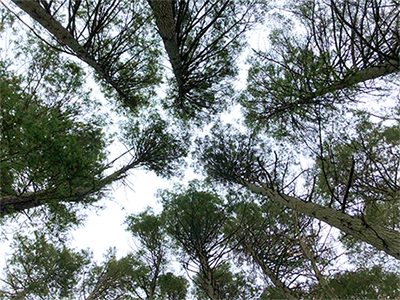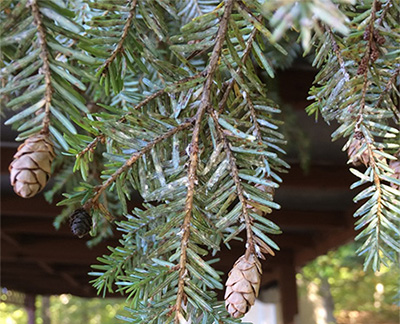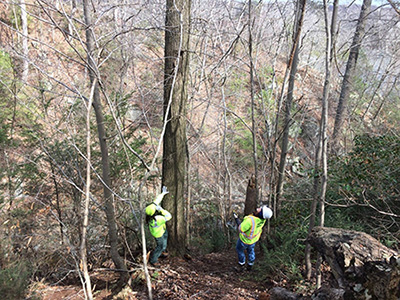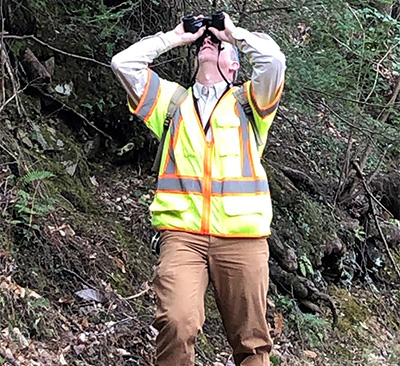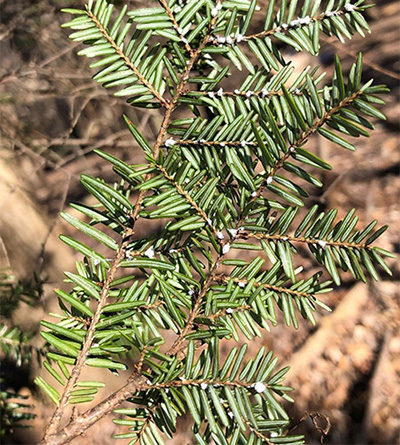
The hemlock woolly adelgid (Adelges tsugae), commonly referred to as HWA, is an aphid-like insect native to East Asia. It feeds on nutrient and water storage cells at the base of hemlock needles. This exotic, invasive insect was likely imported into the United States on Japanese hemlock nursery stock in the 1950s. In Asia, HWA is not a serious pest because it is managed by natural predators, parasitoids, and by host tree resistance. However, in North America, HWA threatens the vulnerable eastern hemlock (Tsuga canadensis) because those natural controls are absent. Eastern hemlocks throughout the southeast have been devastated by this insect including nearby in the Shenandoah National Park.
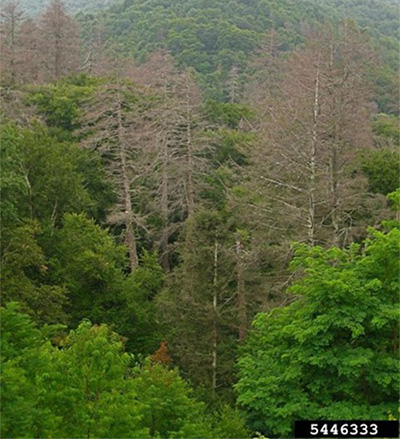
Native hemlock forests once dominated the slopes of many of our streams and rivers. Hemlock trees are known as a keystone species, critical elements of ecosystems that if disturbed have cascading consequences. They create and maintain a unique biome above ground and underground. Their roots hold the soil and rock on often-steep slopes in place, while their intertwining branches significantly cool the surrounding air and water as well as create habitat for many wildlife species. The fallen needles also create an acidic and rich soil. There are not many native eastern hemlocks remaining in Fairfax County. Their natural beauty, the local rarity of this species, and their unique role in watershed preservation make it a priority for protection.
Left untreated, HWA can kill hemlock trees in 4 to 10 years. Once weakened by HWA, the trees become susceptible to damage from other pests, including the exotic, invasive hemlock elongate scale (Fiorinia externa) and the native hemlock borer (Melanophila fulvoguttata). Maintaining trees in a healthy condition discourages serious damage by these secondary pests
Staff actively seeks to preserve the last hemlocks by monitoring their condition and administering prescribed treatments. Staff continues to research management options for hemlocks and HWA, particularly regional biocontrol efforts as they become available.
Click photo to enlarge


